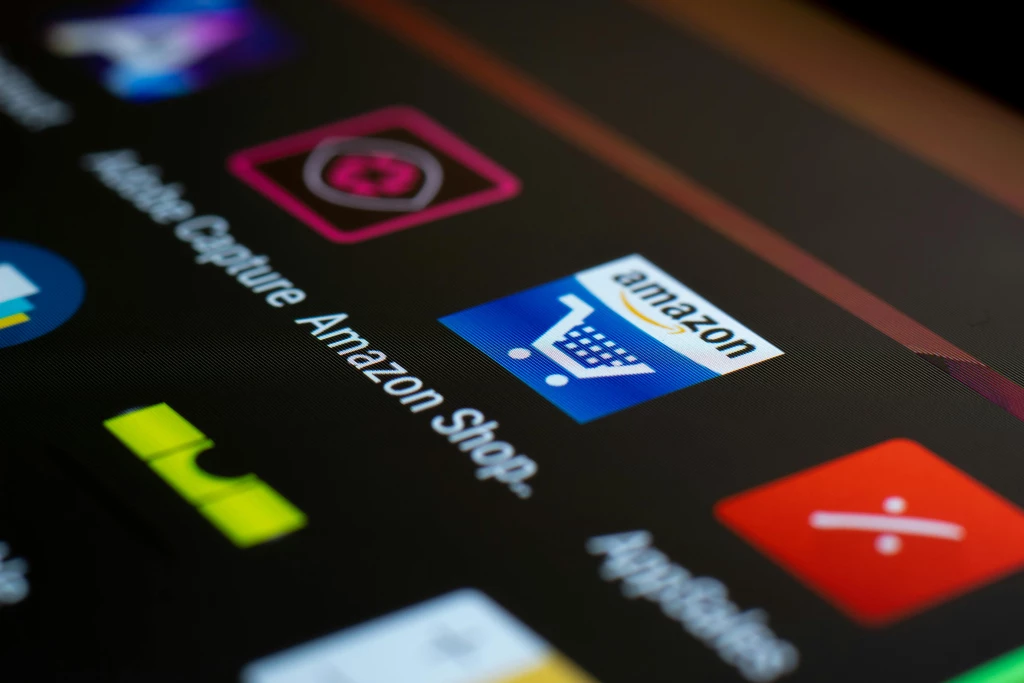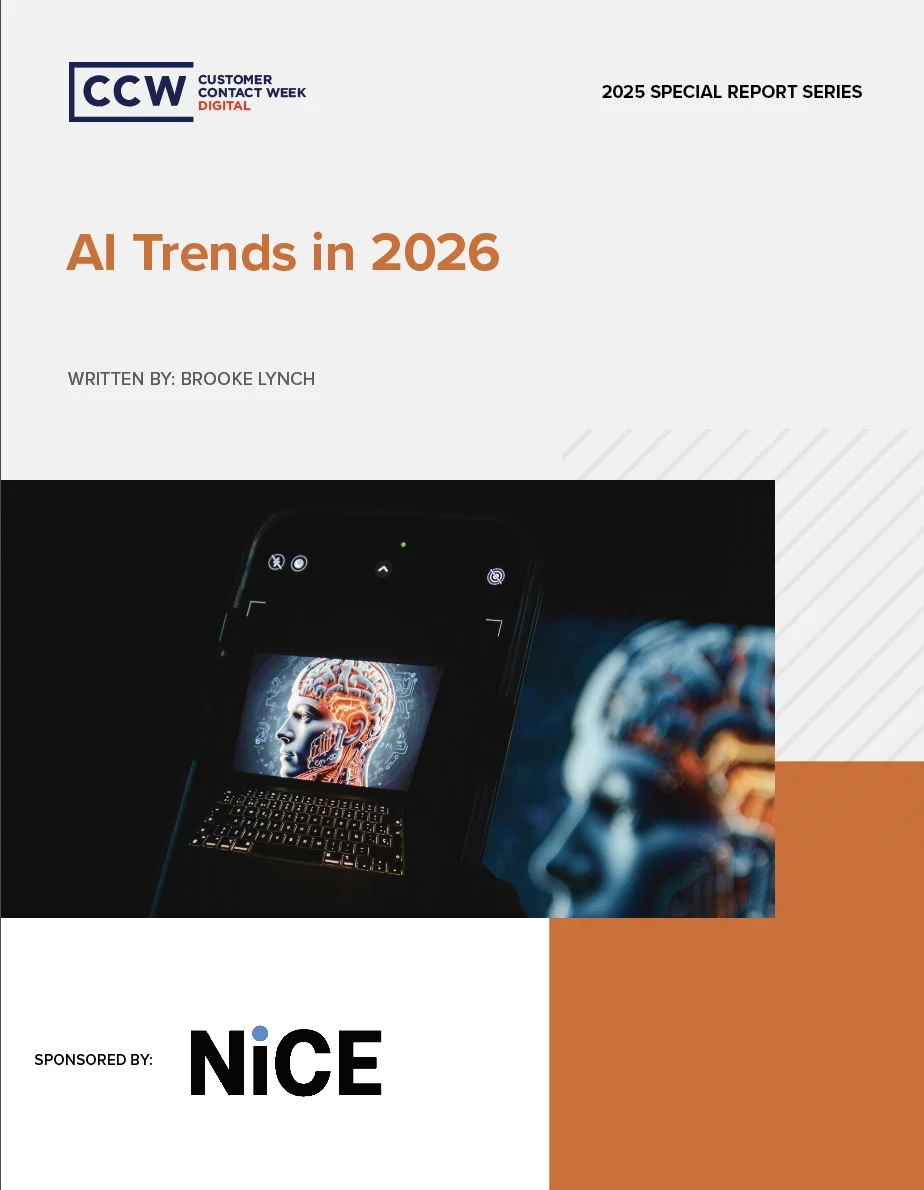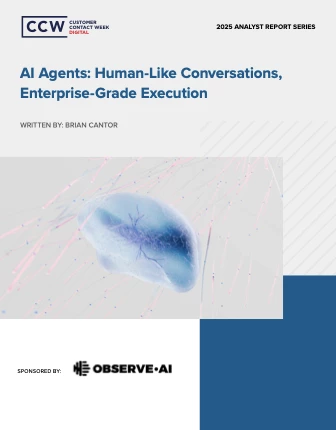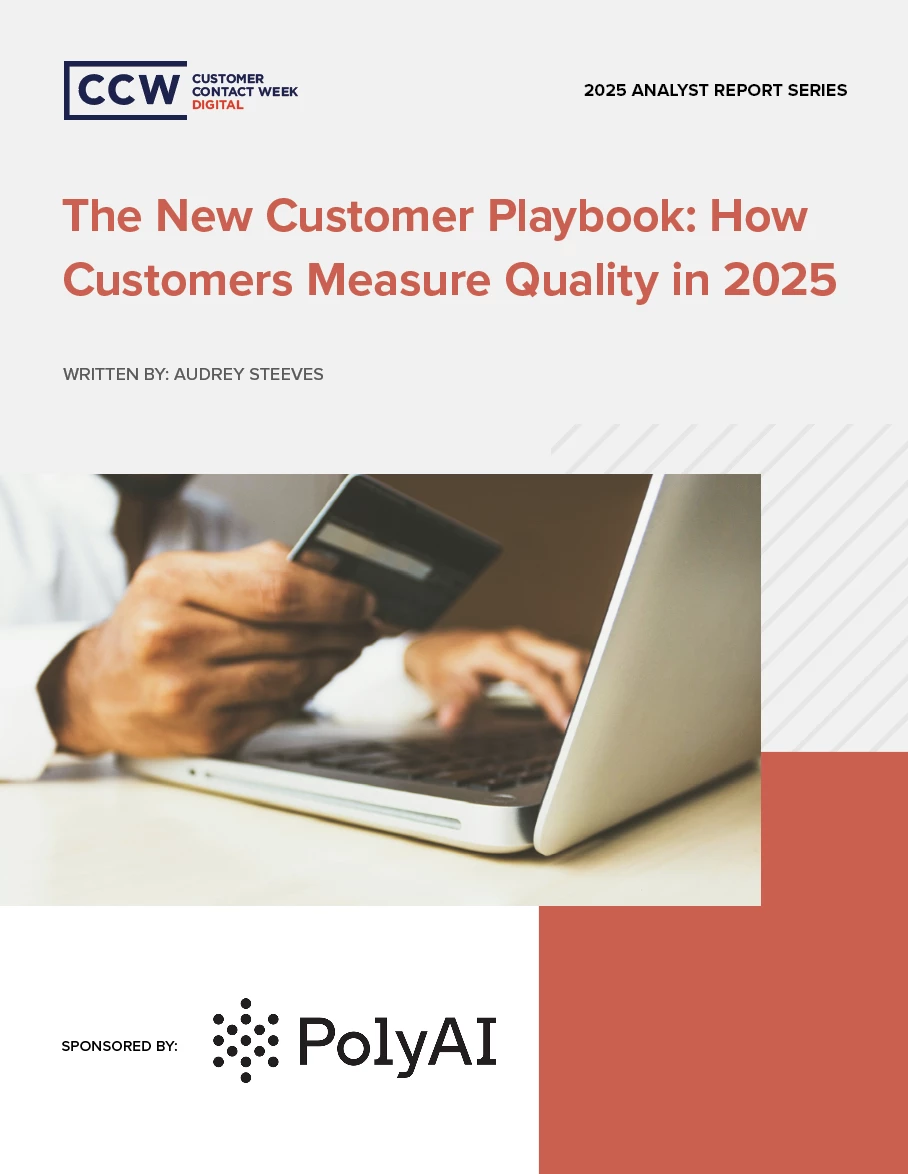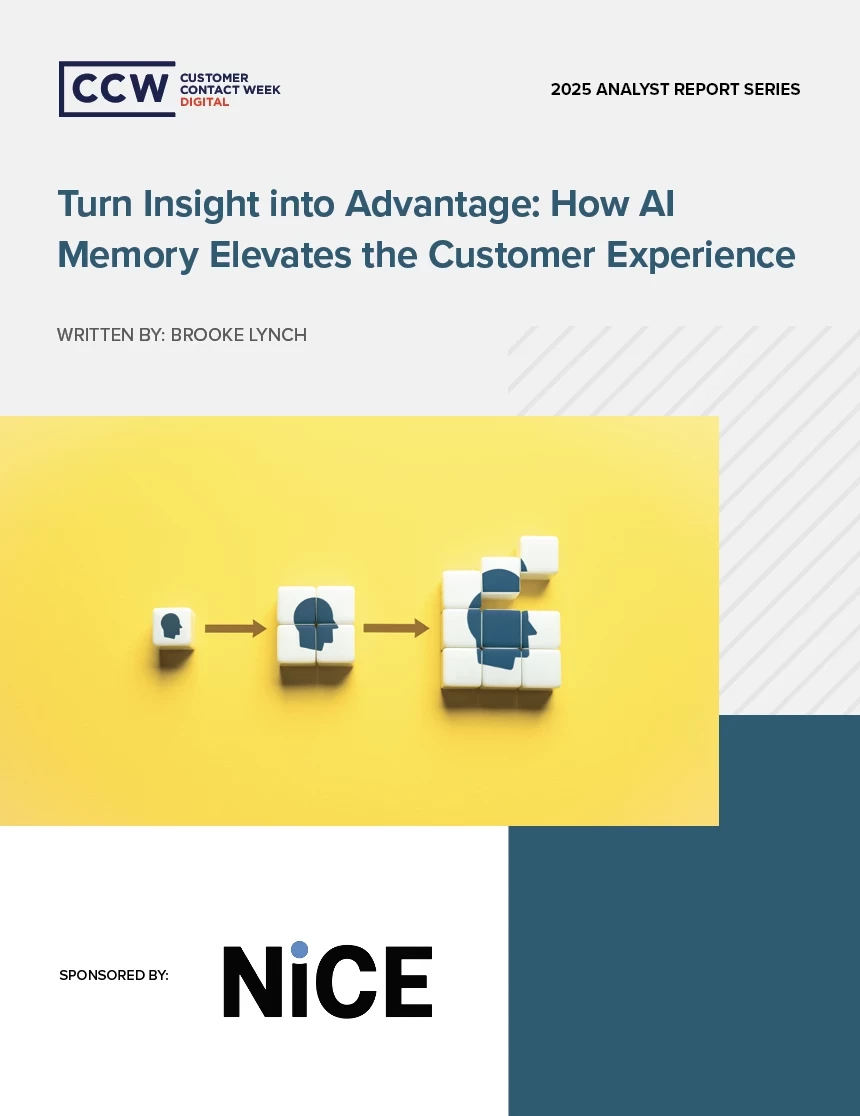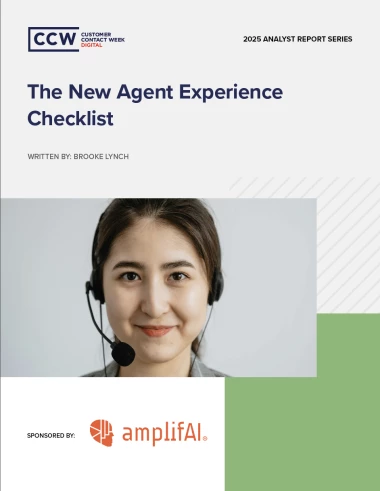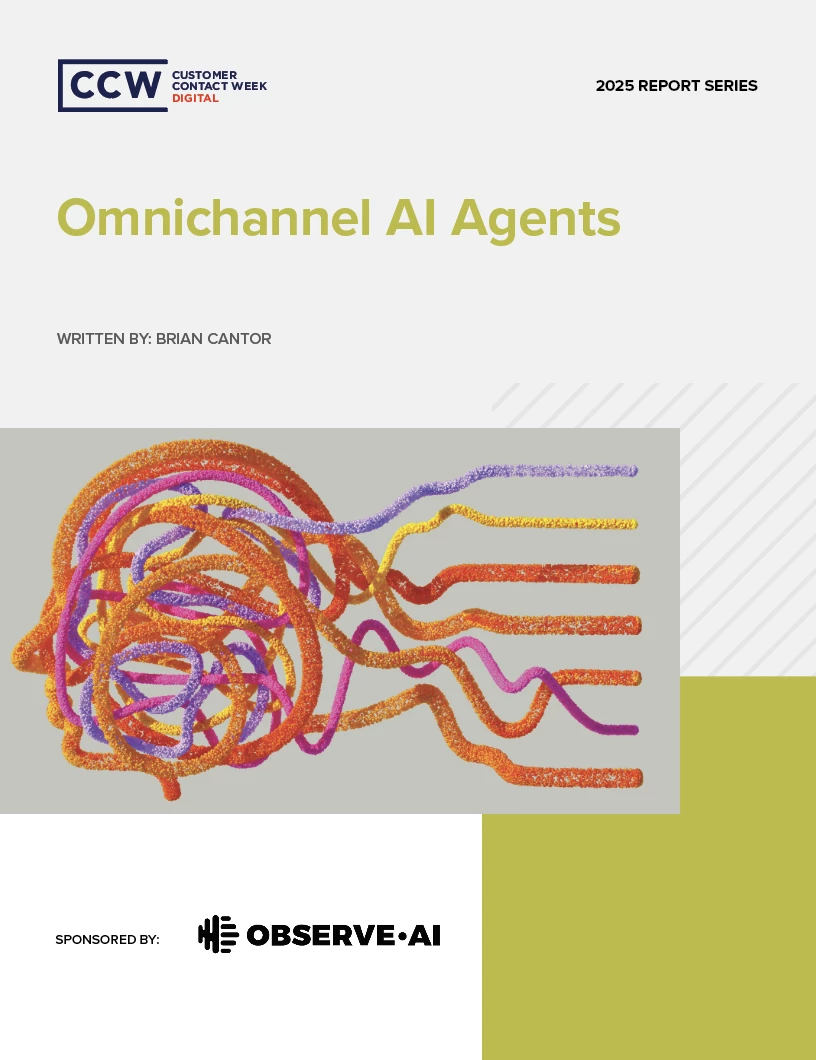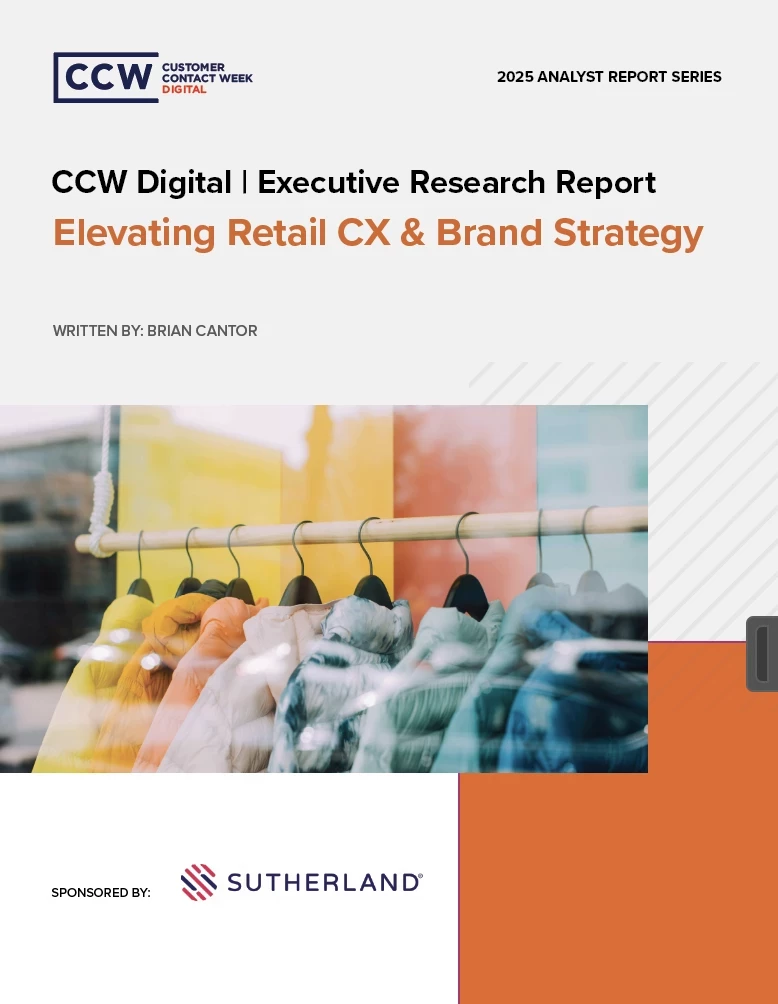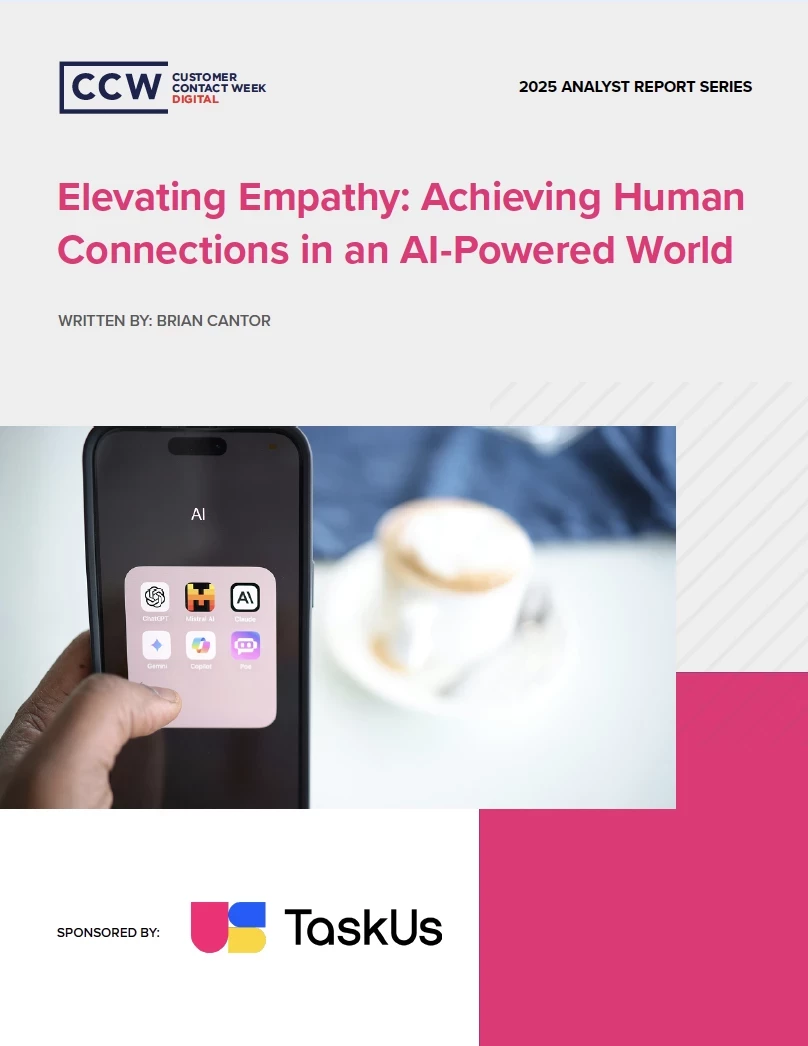Customer Service Lessons From My 33-Night Stay In Las Vegas
Add bookmark
Many people go to Las Vegas for a fun weekend. Some stretch their time on The Strip to a full week. Late in the summer of 2020, I greatly raised the stakes. I spent a whopping 33 nights in Sin City, staying at five different resorts in the process.
What prompted my lengthy excursion to Vegas? You might think it was to combat the cabin fever I developed after spending five months of COVID lockdown in my cramped New York apartment. Maybe you figure I wanted the chance to spend time at the gym and pool, which had been closed to New Yorkers since March. Perhaps you assume I wanted to take advantage of the remote work landscape, in which I could work on the road without dipping into PTO. Alternatively, you could surmise that I wanted to keep my streak of annual Vegas trips - one that dates back to the 2011 Customer Contact Week - intact.
None of those is correct. The real purpose of my trip was to conduct an unrivaled investigation into the state of customer experience management.
Over the course of the trip, I was able to witness how different hotels supported customers during a pandemic, how casinos leveraged technology and psychology to boost customer joy even while taking their money, how different stores and eateries made the most of customer interactions, and how travel organizations adapted to individual customer needs. It is with great pleasure that I share my findings.
The Trip: Making the Most of 33 Nights in Vegas
In truth, I did not initially plan to spend a month in Vegas. After seeing some impressive package pricing on Expedia, I booked my roundtrip airfare and a twelve-night stay at the acclaimed Venetian Resort (Las Vegas Sands-owned).
By the midway point of my trip, I realized that I had far more to investigate. On an entirely unrelated note, I was also having fun. On an even less related note, I started seeing absurdly amazing “comp” deals appearing on my casino rewards accounts. So, I decided to book another seven nights at the similarly luxurious ARIA (MGM-owned).
As that week drew to a close, I realized that my investigation was not over. It made no difference to me, of course, but the fun was growing and the “comp” deals were getting better. I booked another week at Bally’s (Caesars-owned), but then switched to MGM Grand (MGM-owned) once I realized that Caesars-owned hotels had removed gym equipment due to COVID-19.
By the end of my week at MGM, I recognized that my investigation would be insufficient without spending some time at a Caesars property. Accordingly, I booked a weekend at Bally’s, before closing out my final week at the just-reopened Mirage (MGM-owned).
Each time I extended my stay, I had to revise my return flight with Expedia.
In addition to spending considerable time those five hotels, I gambled at just about every other strip resort: Luxor, Excalibur, New York New York, The Cosmopolitan, Paris, The Bellagio, Caesar’s Palace, The Flamingo, The Linq, Harrah’s, Best Western, The Palazzo, Encore, Wynn, and Treasure Island (Park MGM, The Cromwell, and Planet Hollywood were not open during my stay; going to Mandalay Bay would have been too inconvenient since the monorail was closed). I additionally went way up strip to The Stratosphere and off-strip to The Orleans.
Lesson: Consistency of COVID Policies
With unique aesthetic themes, room features, and degrees of luxury, Vegas hotels do each seem distinct. They do attract different crowds, even during times like the summer of 2020 when the price difference between the low-end and high-end hotels was modest.
Once you look past the superficial differences, however, you’ll find that the guest experience across the different properties is rather consistent (especially on The Strip). Most feature similar core amenities, fitness centers, casino games, food options, check-in processes, and layouts.
I did, however, notice one area of dramatic day-to-day inconsistency: COVID policies. The issue is not simply that some properties were categorically more or less strict. Rather, it was that the different hotels disagreed with when and where to impose COVID restrictions.
MGM properties, for instance, heavily protected the gaming floor. Table games had dividers between each available seat, and they generally did not let guests touch the cards (to cut the blackjack deck, for example). On the other hand, they did not make any obvious changes to their gym layouts and maintained daily housekeeping services.
Caesars properties, meanwhile, had a more relaxed gaming floor policy. They restricted how many people could play at a given table, but there were no other changes like dividers or rules against cutting decks. Yet they enforced more rigid COVID policies elsewhere, removing free weights from gyms and nixing daily housekeeping services.
The Las Vegas Sands-owned (at the time) Venetian had its own quirks, such as restricting poolside wait service but not poolside drinking. One could still drink at the pool, but they had to go through the step of first sitting down and ordering at the adjacent restaurant/snack bar.
These differences mattered. As I was essentially “living” in Vegas during my trip, I valued staying at MGM properties where I would have a clean room and a full gym. But as someone who cherishes social interaction, I much preferred gambling at Caesars resorts.
Thinking beyond Vegas, it will be interesting to see how brands approach safety moving forward -- and how those potentially conflicting policies impact customer behavior and perception. Some may choose to emphasize their safety restrictions as part of their value proposition. Others may choose to emphasize their freedoms to attract customers who long ago grew weary of COVID restrictions.
Lesson: Customer Lifetime Value Optimization
The gaming industry is famously masterful at calculating customer lifetime value. Using loyalty cards and keen observation, casinos track numerous guest metrics -- what they play, how they buy-in, how much they bet, how long they stay -- to forecast the potential profit they can bring to the resort. Based on that assessment, they can determine the value in incentivizing a particular customer to spend more time at the resort through room discounts and food comps.
My Vegas trip gave me a front-row seat to this process. By the end of my first week, I was receiving incredible room discounts as well as appealing food and “free play” offers. I was not especially hot at the blackjack tables and still paying rent for my New York City apartment, so the fact that I added 21 days to my trip should tell you just how enticing (and effective) these offers were.
In closely following my rewards balances, I also saw the extent to which all gambling is not treated equally. Although lengthy table stints will always help, average bet size definitely seemed to have the most obvious impact on status. Slots, meanwhile, seemed to have a clearer minute-for-minute impact on comp points than table games.
What fascinated me most, however, is that this customer lifetime value initiative goes far beyond computer calculation. The dealers also tailor individual player experiences based on perceived value.
Blackjack dealers, for example, would often pander to veteran players even if it meant alienating inexperienced “vacation” players who did not seem likely to gamble as much money. This was particularly evident with how dealers approached “basic strategy.”
For those unfamiliar, basic strategy is a method of playing blackjack that statistically maximizes (though certainly does not guarantee) one’s chance of winning. All relatively experienced players are aware of the basic strategy chart, and many follow it religiously. They are also very aware of players who choose not to follow basic strategy.
In reality, what other players do has no meaningful impact on one’s own chance of winning (an exception would be if one were expertly counting cards in a limited-deck game, but in that case, a hardline approach to basic strategy would not make sense anyway). In practice, many fall victim to “gambler’s fallacy” and worry that players who hit when they shouldn’t (or vice versa) are meaningfully throwing off the odds. As a result, they tend to get visibly angry when another player “hits wrong” -- especially if the dealer ends up winning as a result.
An objective dealer would explain the concept of gambler’s fallacy to angry players while nicely coaching the inexperienced player on basic strategy. An “all customers are equal” dealer would remain quiet and impartial. Some CLV-optimizing Vegas dealers, however, openly chastise the inexperienced player for “playing wrong” -- even if that player ends up winning their “bad” hand, and even knowing that the player’s own behavior has little impact on anyone else’s odds.
This approach is clearly designed to help curry favor with the experienced players who are more likely to spend money at the table -- and probably more likely to tip the dealer after big wins.
Dealers are also smart about when to recommend “side bets,” which generally have awful odds but offer exciting jackpots. Not wanting customers to get frustrated by the low odds, and thus leave in resentment, dealers would rarely recommend these wagers (discouraging the “sucker bet” is also a way to build trust, leading to more time spent at the table and better tips).
The one major exception, however, was when they sensed a “communal” vibe at the table. When the players seemed to be having fun and rooting for each other, dealers knew that they were less likely to leave after a few losses, more likely to derive value from the “collective fun” of the extra gimmick bet, and certain to experience “FOMO” if someone else at the table won a big jackpot. In such cases, dealers would more aggressively “sell” the side bets.
Thinking beyond Vegas, it is essential to use a combination of hard analytics and human judgment to assess -- and work to optimize -- customer lifetime value. A company’s commitment to delivering a consistently great experience for all customers does not mean it should refrain from elevating its experience for the most lucrative ones.
Lesson: Technology-Driven Experiences
Technology can be cool, but its flash should never come at the expense of utility.
The Vegas hotels certainly take this message to heart, offering fun yet purposeful technology throughout their resorts. Every resort at which I stayed offers some form of mobile check-in. The MGM and Caesars properties also offer self-service keycard printing, and the MGM properties even allow guests to load a virtual keycard on their phones (thus bypassing the need for any wait upon arrival). ARIA provided additional technology-driven experiences, such as a bedside tablet for ordering food, booking on-site appointments, and controlling in-room amenities.
Two issues did, however, arise in practice:
1. Inconsistent quality: MGM’s virtual key card feature could be finicky, particularly when it came to gaining elevator access (for security purposes, guests need to tap their key before they can select a floor). Virtual key reading was completely down during one of my nights at ARIA, which meant that I had to go to the front desk and request a new physical key just to get back to my room. Technology designed to reduce effort ended up creating more.
2. Inconsistent service behind the technology: The mobile technology I referenced is essentially a “user interface” -- an automated way to access traditionally “human” hotel services. If the actual service is impersonal or otherwise lacking, it will undermine the perceived value of the technology.
I encountered a few examples of #2 during my trip. When I used mobile check-in at MGM Grand, for instance, I was initially assigned to the “South Tower” -- a separate, creepy-looking, motel-esque part of the hotel. I needed to wait for employee assistance in order to switch to the main tower.
Had I checked in the traditional way, I would have been able to resolve the issue on the spot.
Despite digitally checking into the Mirage at around 11AM, I had to wait until after 3PM to get my room assignment -- even though the hotel was essentially empty. This was presumably due to an automated process standard (no rooms before 3PM); had I checked in the traditional way, the agent would have obviously found me a room in the empty hotel immediately.
In general, I felt that the MGM mobile process was less personalized than what I experienced at Caesars-owned resorts. Upon digitally checking into Bally’s, for instance, I was greeted with some very compelling (and very cheap) upgrade offers -- the kind of impossible-to-reject upsells you would expect from an in-person representative. MGM, on the other hand, didn’t offer any dramatic deals. Everything felt by the book.
Thinking beyond Vegas, it is imperative to match technology investments to customer intent and expectations. How does this solution add value to the customer journey? What kind of experience will the customer expect when using the interface?
Lesson: Omnichannel Engagement
Customer experience professionals cannot avoid discussions about omnichannel engagement. Unfortunately, examples of seamless journeys remain incredibly hard-to-find -- even in technologically savvy tourist destinations like Las Vegas.
Over the course of my stay, I witnessed numerous examples of disconnected experiences. These experiences created needless friction and frustration during a trip that should have been 33 days of pure joy and excitement.
1. Caesars Player Profile Problem: Early in my trip, I realized that Caesars had long listed me under two profiles: one based on my current New York address, and one with my family’s New Jersey address. Casino employees had no way to see which was more “current,” so there was no telling which profile they would access when checking me in based on ID and/or printing a replacement card. This only further fragmented my profile.
Making matters worse, the different profiles seemed to have markedly different bonus statuses. One seemed to have more tier credit, and thus was the better fit to use when playing at the casino. The other card had more comp offers, however, and therefore was the better fit to use when booking a hotel. This, too, only further fragmented my profile.
Caesars eventually instructed me on how to reconcile the two profiles, but that process took two weeks to complete: in 2021.
2. Bally’s Check-Out Fiasco: As I noted earlier, upon learning that Bally’s did not offer a full gym experience, I canceled my initial stay and switched to MGM. The front desk could not have been nicer about the issue, quickly processing my cancellation and confirming I would not be billed. Unfortunately, some issues did end up arising.
First and foremost, there was a billing problem. Bally’s insisted it canceled any potential charge on my card, but Apple Card support insisted Bally’s never removed the temporary hold. Said hold ended up lasting the duration of my trip.
Granted, I knew I would eventually get the money back. The more frustrating issue involved my Caesars Rewards account. Although Bally’s had processed my cancellation/refund in its own system, it did not signal the cancellation to the broader Caesars network. Caesars “corporate” was thus under the impression that I had kept my Bally’s reservation and was staying until September 4. Because I was required to wait 48 hours between each “comp” reservation, this meant that I was unable to book another room until September 6, even though I needed to check-in on the 4th.
I eventually resolved the issue after numerous back-and-forth phone calls, but no such calls should have been required. My cancellation should have been reflected immediately on Caesars’ servers, thus “resetting” my profile and rewards eligibility.
3. Expedia Flight Dilemma: Each time I extended my stay, I had to change my flight. On the first two occasions, the process was simple: Expedia quickly moved me to an identical United flight (at the same “Basic Economy” level) for the following week.
The third and final change was a bit more complicated. At the time I called to transfer from 9/4 to 9/11 (there was no obvious way to do this digitally), Expedia was only selling Regular Economy tickets for the new flight. I had more than enough credit from my existing booking to cover the new ticket, but the representative was unsure she could process a transfer that was not 100% like-for-like. She eventually decided she could find me a Basic Economy seat but urged me to first call United directly to see if it would honor a transfer to Regular Economy (or even Business Class) based on the favorable price discrepancy.
I ultimately decided it was not worth the hassle, and contacted Expedia to just book a Basic Economy seat. Unfortunately, the price had more than doubled overnight. Worse, the new representative did not have clear notes from the prior conversation -- no indication that the rep was going to transfer me to this new flight, and no indication that she urged me to call United even knowing I was risking a potential price hike. As a result, the representative was unsympathetic to my situation.
After a lengthy argument, Expedia not only agreed to process the transfer but upgrade me to the Regular Economy seat at no extra charge. Even then, however, there was a situation: the United system did not explicitly say my ticket was “Regular Economy,” which meant that I went to the airport without 100% certainty I could have a carry-on bag.
Thinking beyond Vegas, it is crucial to create a unified experience across all touch points. When customers switch between agents and channels, they should never feel as if they are changing brands. In addition to technology and systems that unify customer data, omnichannel engagement hinges on a strategic pledge of consistency. A promise made in one channel needs to be an obligation fulfilled in any channel.
Lesson: “Human” Customer Interactions
As an iconic tourist destination with a rich entertainment culture, Las Vegas should theoretically attract (and continuously cultivate) a community of elite, enthusiastic service professionals who deliver a remarkably “human” form of care.
In reality, the service is as hit-or-miss as one would expect in any major city.
Front desk associates were a definite mixed bag. When I complained about not actually having a “Strip view” during my eventual stay at Bally’s, the associate warmly resolved the problem and moved me to a room that she “promised I would love.” She was right. But when I complained about the excessive noise in my room at MGM Grand (remember, I was working), I was met with a fairly cold tone. Don’t get me wrong, she did quickly find me a new room, but she did not seem especially enthusiastic about forming a “connection” with her customer.
Retail venues and eateries were similarly unpredictable. In terms of an apples-to-apples comparison, one cashier at ARIA’s Pressed Juicery went out of her way to engage in banter and predict my daily order. The cashiers at The Venetian smoothie/juice place, on the other hand, could not have seemed less interested in interacting with customers. Several employees at nice, sit-down restaurants were cold during my visit; the sole customer-facing employee at the Footlong Hot Dog stand at Best Western, meanwhile, offered warm care and topping recommendations at 1AM on a weeknight.
Since they are a type of employee one does not regularly encounter in most other cities, casino dealers arguably represented the best test case. They, too, were a mixed bag.
Many were amazingly personal or engaging. One wowed Caesars Palace guest after Caesars Palace guest by doing hilarious impressions of high-profile political figures. Others won favor by playfully mocking those who missed out on big bets. Several kept players engaged by sharing the wild (though likely exaggerated) stories of their life in Vegas.
My absolute favorite was a woman named Mandy, who dealt blackjack at the outdoor Carnaval Court (past CCW attendees and team members know this venue has a special place in our hearts). Incredibly engaging, conversational, and funny from the moment I sat down, she did her job perfectly. She created a sense of community at her table -- I spent hours getting to know a group of fellow players from St. Louis in what became my favorite night of the trip -- and made us joyfully forget that we were all probably losing money.
To illustrate how pro-customer this dealer was: she laughed at my embarrassingly corny, Barry Manilow-themed “dad joke” about her name (you know, “Mandy, please come and give without taking … our chips”). She knew how to connect with people, which resulted in all of us spending way more time than we should have gambling -- and tipping way more than we otherwise would have.
Some dealers, of course, fell on the other side of the spectrum. They would get a bit aggressive in their pursuit of tips (asking when players were all down big, freaking out if someone accidentally touched chips they reserved for the dealer). They would make no attempt to “cheer up” players who were losing money. One dealer at The Stratosphere even spent a half-hour whining about how tired she was; the only reason I stayed was because I happened to be winning big at her table.
Thinking beyond Vegas, it is important to remember that the human connection matters. Not every situation warrants a lengthy conversation, but all interactions benefit from a degree of warmth and humanity. When the customer feels as if the agent cares about them -- and is excited to serve -- they are far more likely to spend money.
Lesson: Personalization vs. Greater Good
On the one hand, hospitality is arguably the world’s most experience-driven industry. Great brands should do everything in their power to create special, magical moments for each customer. On the other hand, it can be difficult to personalize all aspects of an experience that is designed to accommodate tens of thousands of customers each week.
A more realistic goal, therefore, may be to create an overall experience that is broadly spectacular enough to please most customers. Buoyed by warm, pro-customer employees, such an environment will typically come across as special - even if it wasn’t literally designed for any specific person.
The model did, however, become more complicated during the COVID-19 pandemic. Although the resorts had fewer total people to serve, they arguably had to deal with a wider array of preferences. Creating a “catch all” experience was therefore a particularly trying task.
Due to the particularly unique circumstances of my trip (who goes to Vegas with the intent of working from 6AM-2PM every day?), I ran into some issues with the “greater good” experience.
One obvious example concerned housekeeping. Presumably to ensure rooms are ready for afternoon check-ins, every hotel at which I stayed wanted to provide housekeeping service in the 9-11 AM range each morning. The hope is that the typical vacationer will be out of their room by then, allowing the hotel to attain efficiency without sacrificing customer centricity.
But I was not a typical vacationer, and hearing a daily, aggressive 9AM housekeeping knock while I was writing a report or on a client call proved very frustrating. No matter how many times I rejected morning service and requested an afternoon cleaning, the staff would never pick up on the pattern.
When I remembered to put up the “do not disturb” sign, I would somewhat solve the first half of the problem: the housekeeping staff did not loudly knock on my door (though I could still hear them banging on nearby doors). The effort did not, however, automatically prompt the staff to come back in the afternoon when I was done working. The cleaning staff generally seemed to stop making its automatic rounds by about noon (when my “do not disturb” sign was still up), meaning that I would have to call and request service when I finally left my room later in the day.
I know that creating a “Brian Cantor housekeeping policy” is unreasonable, but I do feel as if these resorts could have allowed me to proactively book a time for housekeeping services. I also wonder if the housekeeping staff could have picked up on -- and remembered -- my daily room patterns. Indeed, customer-centric brands should at least consider contingencies for when the “greater good” approach does not satisfy particular customers.
Room assignments created a similar challenge. Even though the hotels seemed to be running at about 25-35% capacity during COVID-19 (likely even lower at mid-week), they seemed to block all the guests into the same areas of the hotel. This surely created more efficient housekeeping, maintenance and security efforts, but it also meant that I always had next-door neighbors (often noisy ones) at a time when the hotel should have been empty enough to let me have a quiet room in which to do work.
Another issue concerned hours of operation. Whereas Vegas typically has a “city that never sleeps” vibe, the atypically small crowd prompted some restaurants and shops (even a famous 24-hour food court) to trim their hours. This meant that I actually had trouble finding quality late-night food before bed; I also had issues finding anything but smoothies and protein bars when I woke up at 6AM.
Going beyond my own quirks and admittedly obnoxious demands, I also noticed some “policy vs. personalization” issues on the gaming floor. Due to social distancing restrictions, guests were prohibited from standing near tables at which they were not playing. With only a few seats available at each table, this often meant that players would have to choose between gambling and hanging with their friends and families.
On the opposite end of the spectrum, some players wanted more “social distancing” than was required by policy. I witnessed one woman throw a fit because she felt that a fellow blackjack player was “leaning too close to her in a pandemic” even though he was wearing a mask and sitting in the designated area. Her rant put the resort in the unenviable position of having to take sides in a dispute between two customers.
Thinking beyond Vegas, it is important to identify which aspects of the experience are impossible (or at least completely impractical) to personalize. From there, the brand should consider overall customer data and new potential trends and variables to create the greatest possible “catch all” experience. Where possible, it should also develop contingency plans to support those customers who do not fit into the broader prototype.












